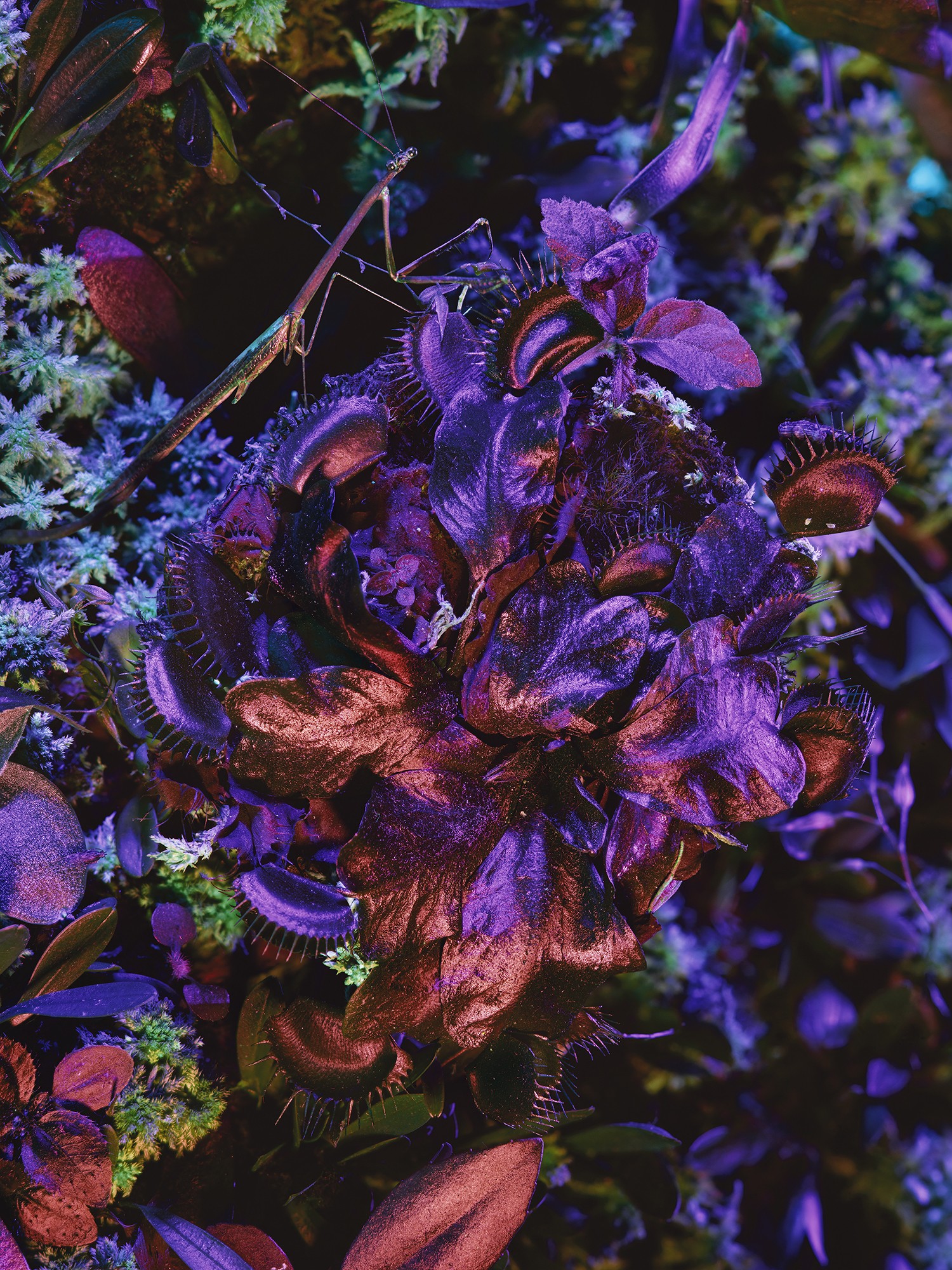1150 25th St /
Altman Siegel
Opening reception: September 12th | 6pm–8pm
Richard Mosse’s new body of work, Ultra, captures the precious, irreplaceable beauty of the rainforest eco-system through a closely examined depiction of its plant and insect life. At a time when the fragile rainforest is under serious threat from population pressure, burning and deforestation, cattle farms, palm oil plantations, illegal goldmines, and other human-built infrastructure, Mosse investigates the complexity of its biome, its symbiotic relationships and interdependency.
The rainforest is a place of constant predation, where the natural world is in a perpetual cycle of kill-or-be-killed. This series examines the ways in which plant and insect life have evolved over millions of years for survival, often by developing forms of camouflage, while orchid flowers have evolved to perfectly complement the shape of orchid bees, formalizing the interdependence of the eco-system.
To make this series, Mosse borrows a scientific photographic technique to capture ultraviolet fluorescence. The resulting artworks have been composited from numerous separate images (typically fifty or more frames) to yield large-scale, hyper-detailed, ethereal landscapes. The natural world takes on an unfamiliar and almost alien aspect due to the fluorescence of UV light in the visible spectrum, making the soft surfaces and fibrous stalks of flowers seem sheathed in tinted metals while textured plant life takes on a glowing bejeweled quality that seems almost intestinal. The light amplifies the camouflaged patterns of insects; the crosshatching in their eyes and wings are depicted with lucid clarity.
Mosse observes: My subject, the tactile cloud forest mosses, lichens, spider webs, bark, corporeal orchid flesh and the dazzling carapaces of insects, once illuminated by this unearthly light, became profoundly beautiful. Wandering through the forest at night with a UV torch, I was enchanted by an unseen glowing world of natural activity. The ultraviolet fluorescence seemed to heighten my perception of this complex interdependency; the colors and textures began to meld under this narrow wavelength of visible light, refining my focus on the building blocks of life. These highly aesthetic forms have evolved to warn, entrap, ambush, evade, kill and survive. Our existence is not predicated on their destruction. We have the technological means to protect this extraordinary natural beauty, which is essential for our survival as a species.
The intimate and detailed landscapes of Ultra appear to be a departure for Mosse, an experienced conflict photographer, but the investigation of this ecosystem continues his practice of using hyperspectral visual effects to explore the crossroads between aesthetics, violence, camouflage and perception.
In the adjacent gallery, a selection of images from Mosse’s Heat Maps, highlights a different site of conflict that the artist has explored: the refugee crisis in Europe. Taken with a militarygrade border enforcement thermal camera, which reads heat instead of light, this body of work makes visible the daily, lived experience of millions of refugees and migrants struggling to survive in uncertain, often hostile conditions. The infrared camera reads the heat of human bodies, obfuscating any defining physical features, and thereby mimicking the governmental practice of reducing each individual to one among many, a nebulous mass reducible to statistics and rhetoric. To create this series, the artist took as many as a thousand smaller images of a given camp and stitched them together to create the detail-dense whole, a process which sometimes results in phantom limbs or displaced body-parts, literalizing the displacement of the depicted people in the formal qualities of each image.
Richard Mosse (b. 1980) lives and works in New York and Ireland. This fall, his immersive video installation, Incoming, will be presented at the San Francisco Museum of Modern Art from October 2019 to February 2020, as well as at the National Gallery of Art in Washington DC and as part of When Home Won’t Let You Stay: Migration through Contemporary Art, ICA Boston. This work debuted at a solo exhibition at the Barbican Art Gallery in 2017 and has been exhibited at many institutions since. Other recent exhibitions include the NGV Triennial, Melbourne; Central Academy of Fine Art, Beijing; Hamburger Kunsthalle; Joslyn Art Museum, Omaha; Portland Art Museum; The Nasher Museum of Art, Dallas; Duke University, Durham; and Louisiana Museum of Art, Denmark. He is a recipient of the Prix Pictet, the Deutsche Börse Photography Prize, a Guggenheim Fellowship, a Shifting Foundation Grant, the Yale Poynter Fellowship in Journalism, the Frankfurt Biennial B3 Award, a grant from Pulitzer Center on Crisis Reporting and has received a Leonore Annenberg Fellowship. Mosse represented Ireland at the 55th Venice Art Biennale. His latest monograph, The Castle, published by MACK, was selected by Teju Cole as one of the New York Times Magazine Top Ten Photobooks of 2018. Mosse earned an MFA in Photography from Yale University and a PG Dip in Fine Art from Goldsmiths, London.
For more information please contact 415-576-9300 or info@altmansiegel.com.
